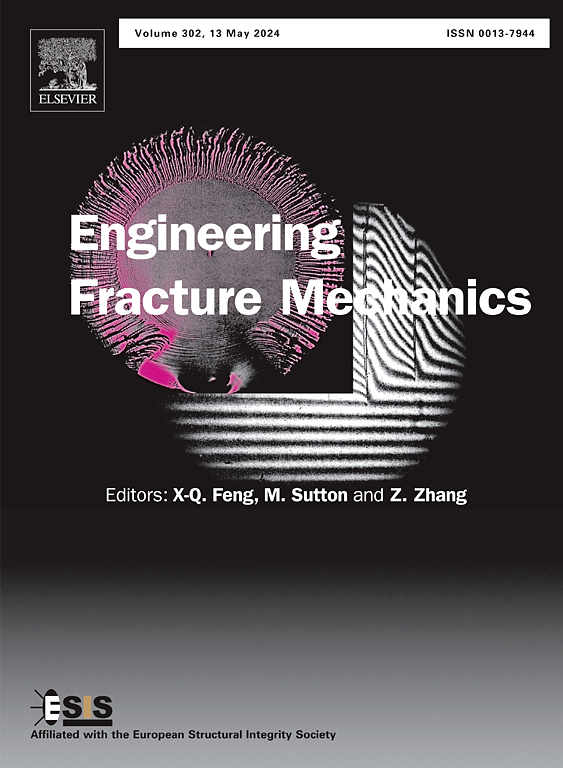Directional development mechanism of hard rock fracture under true triaxial stress: Insights from macroscopic and microscopic fracture perspectives
IF 4.7
2区 工程技术
Q1 MECHANICS
引用次数: 0
Abstract
The excavation of hard rocks in deep engineering frequently leads to disasters such as rockbursts, spallings, and collapses. Traditional triaxial tests, which neglect the effect of the intermediate principal stress, fail to reveal the failure mechanism of deep hard rocks. Under true triaxial stress, the intermediate principal stress inhibits volumetric deformation and expansion of rocks, resulting in directional failure. However, the fracture characteristics of hard rocks remain qualitative, lacking a mechanistic explanation. Therefore, based on true triaxial compression tests, complemented by acoustic emission and scanning electron microscopy, the directional development mechanism of hard rock fracture under true triaxial conditions is interpreted from both macroscopic and microscopic fracture perspectives. The macroscopic results show that as the intermediate principal stress increases and the minimum principal stress decreases, the macroscopic failure angle increases, the roughness of the rock failure surface decreases, and the fracture plane becomes increasingly perpendicular to the minimum principal stress, leading to the directional development of fractures. Microscopically, the development of microcracks is suppressed by the intermediate principal stress. As the intermediate principal stress increases and the minimum principal stress decreases, microcracks extend more severely in directions parallel to the intermediate principal stress, reducing intergranular fracture and increasing transcrystalline fracture and the proportion of tensile cracks. The differences in macroscopic deformation and microscopic tensile and shear fractures induced by true triaxial stress reveal the mechanism of directional rock fracture.
求助全文
约1分钟内获得全文
求助全文
来源期刊
CiteScore
8.70
自引率
13.00%
发文量
606
审稿时长
74 days
期刊介绍:
EFM covers a broad range of topics in fracture mechanics to be of interest and use to both researchers and practitioners. Contributions are welcome which address the fracture behavior of conventional engineering material systems as well as newly emerging material systems. Contributions on developments in the areas of mechanics and materials science strongly related to fracture mechanics are also welcome. Papers on fatigue are welcome if they treat the fatigue process using the methods of fracture mechanics.

 求助内容:
求助内容: 应助结果提醒方式:
应助结果提醒方式:


